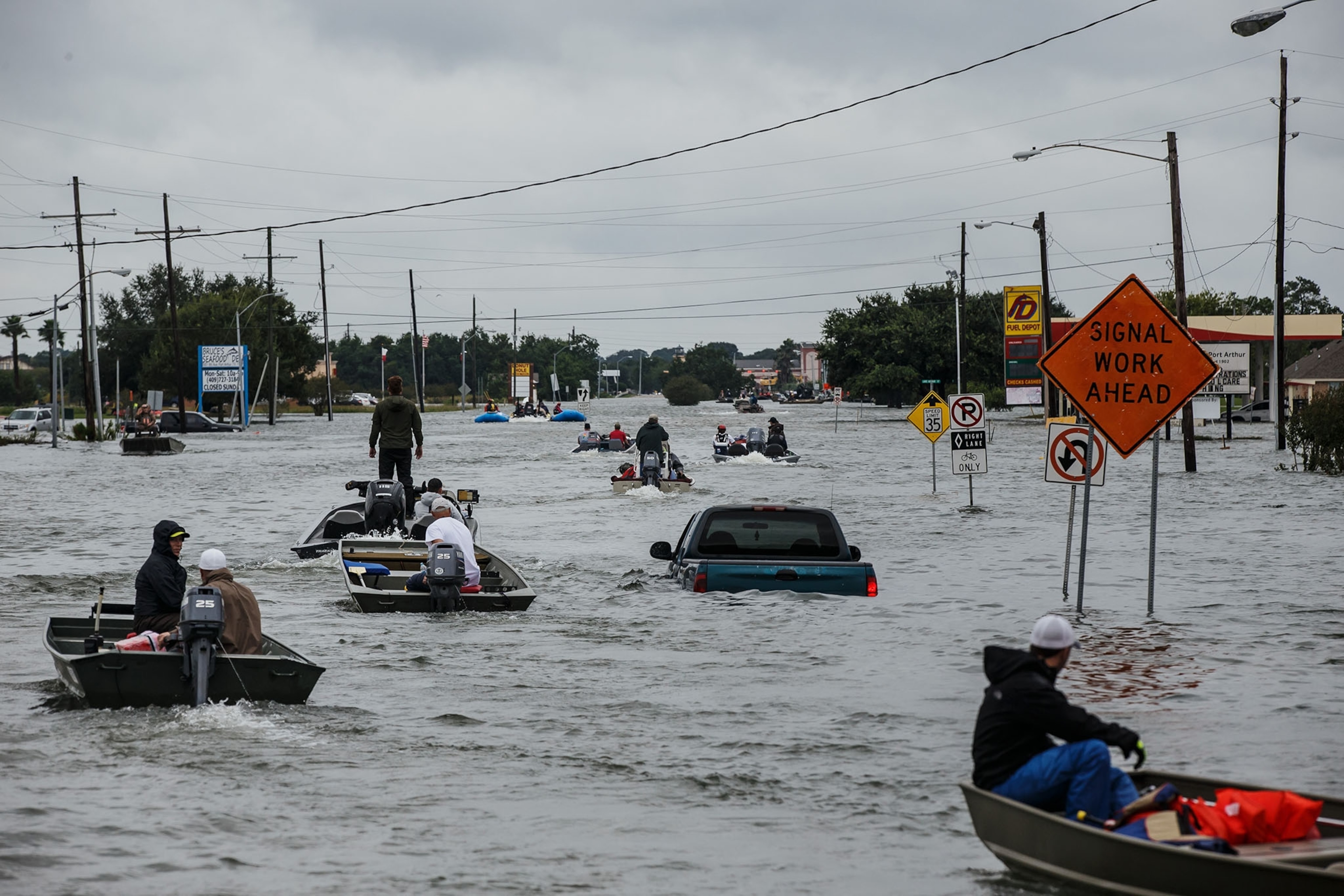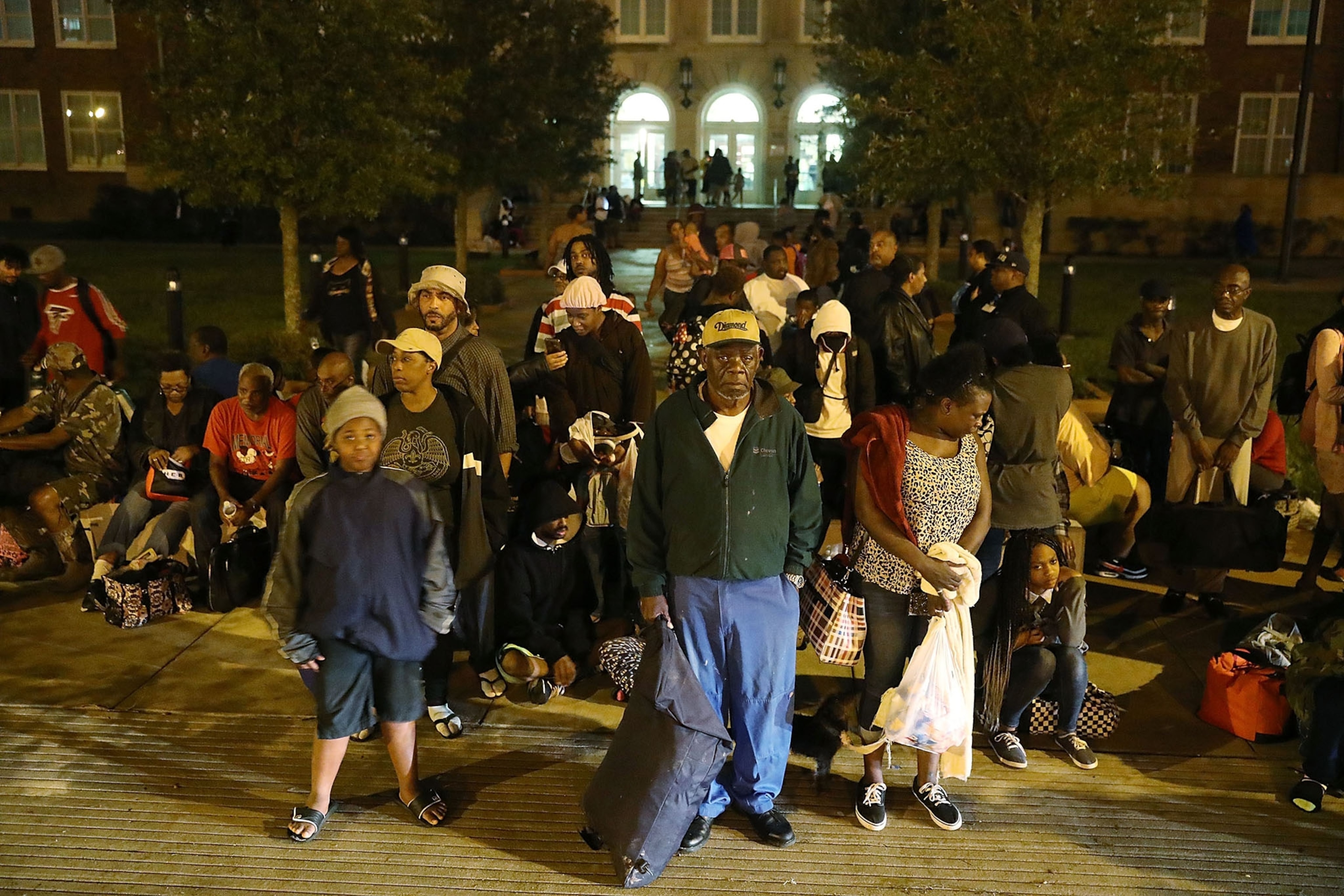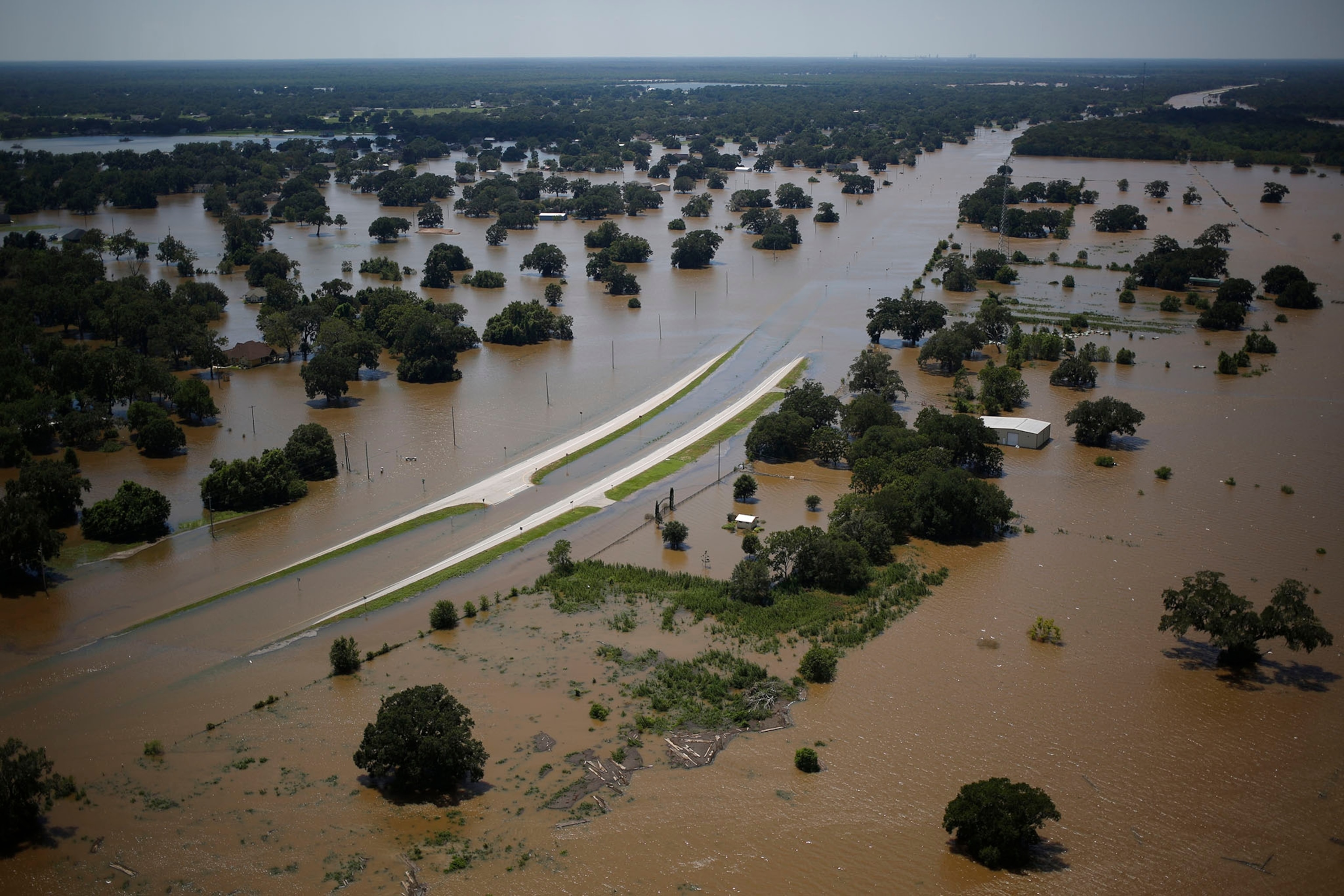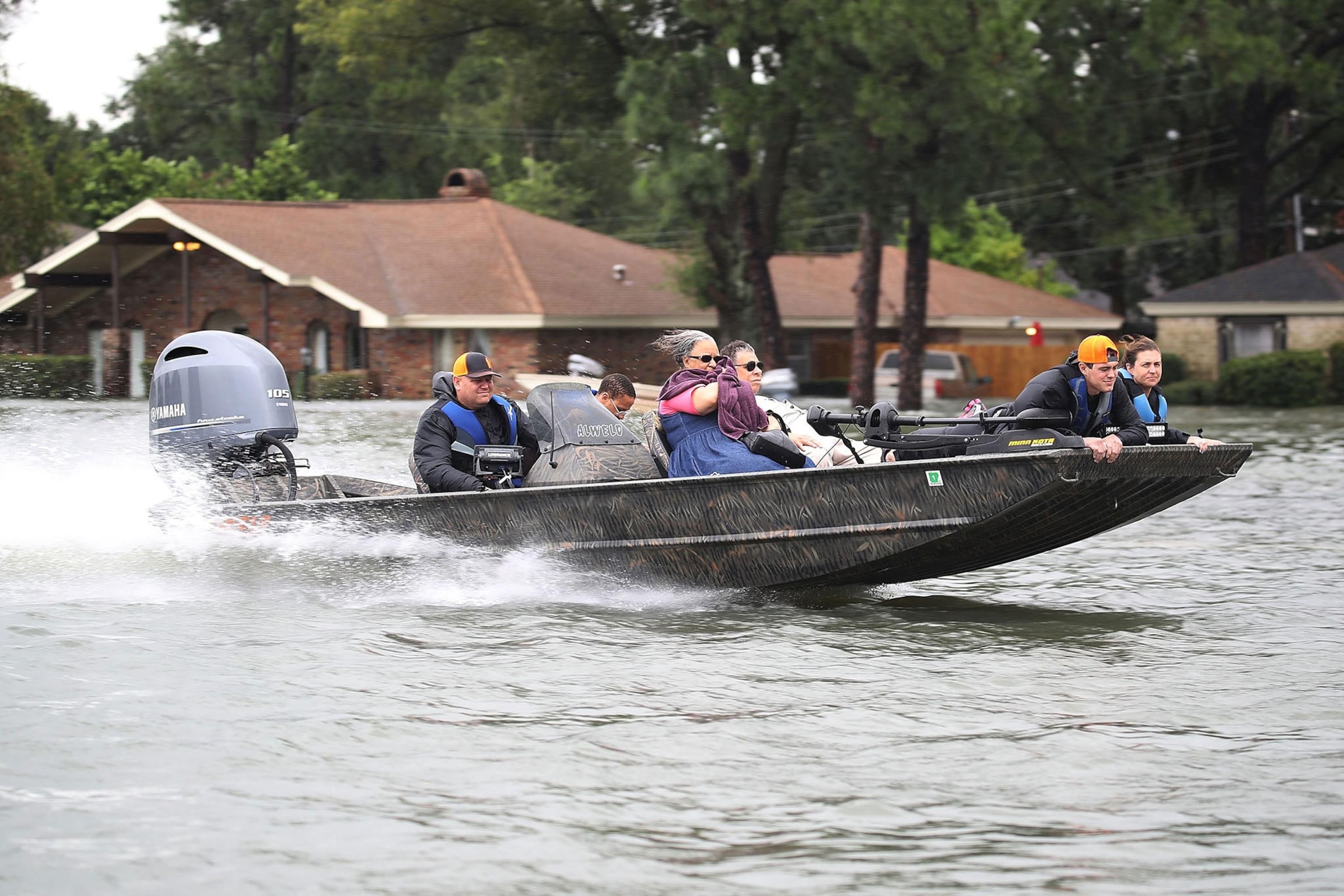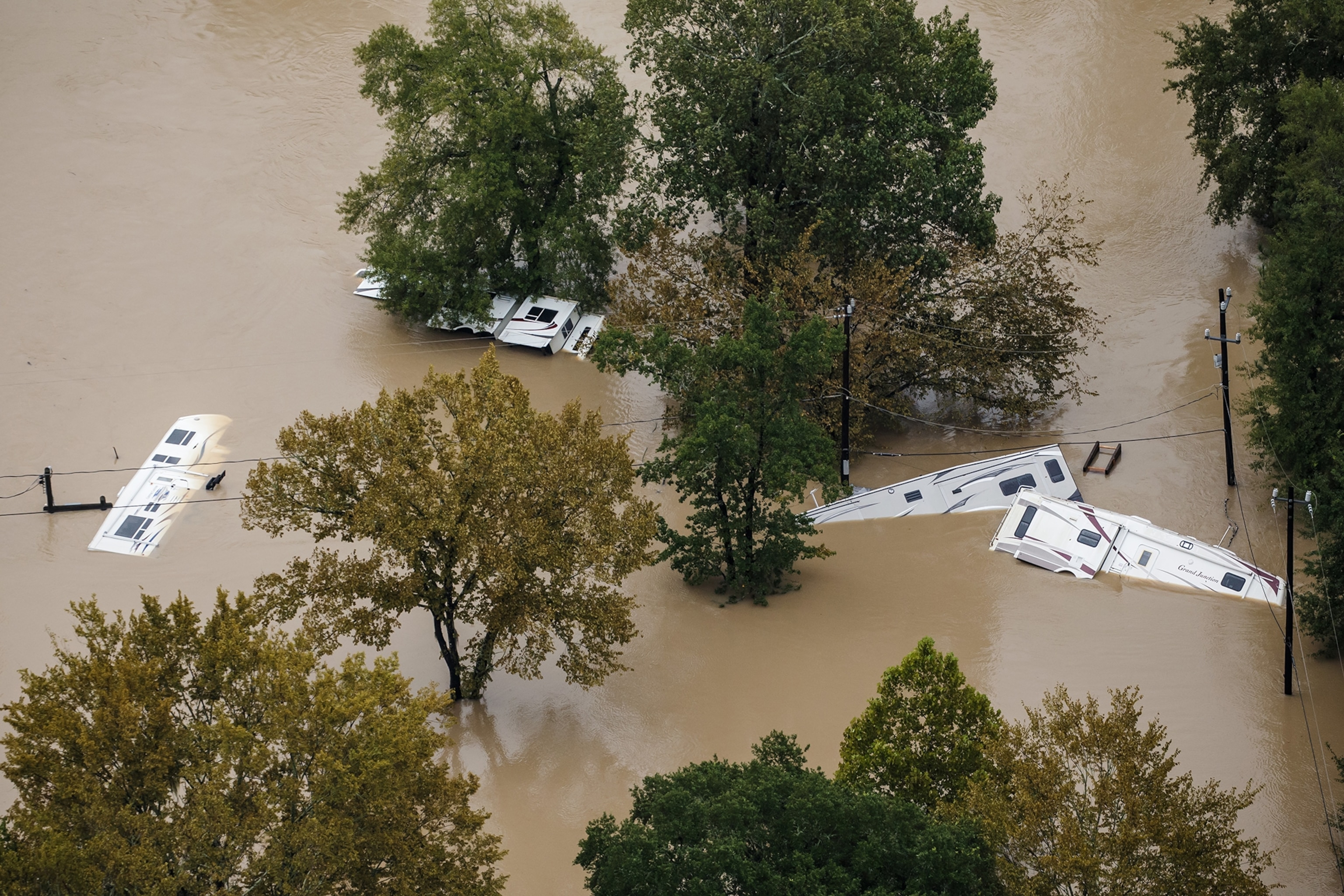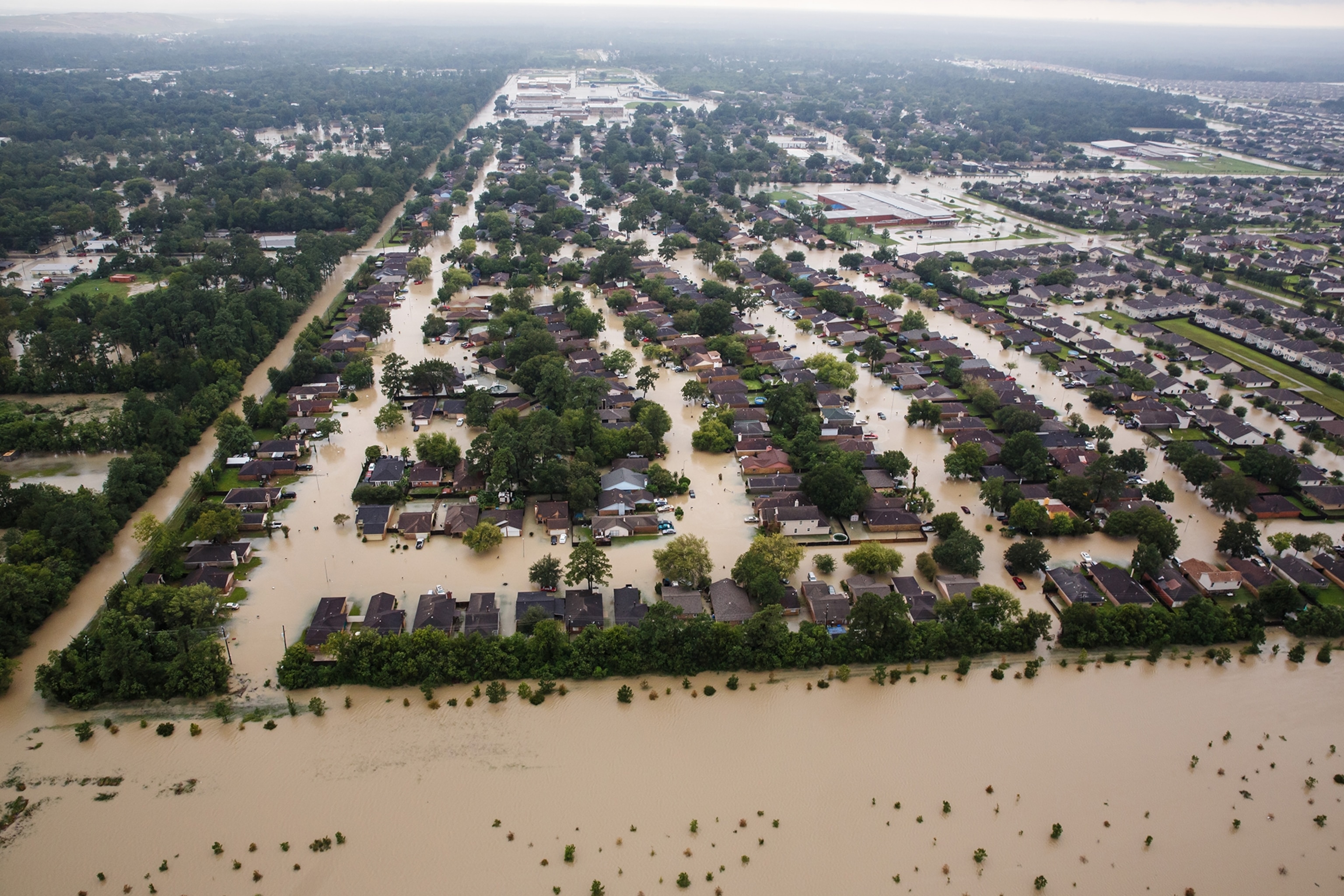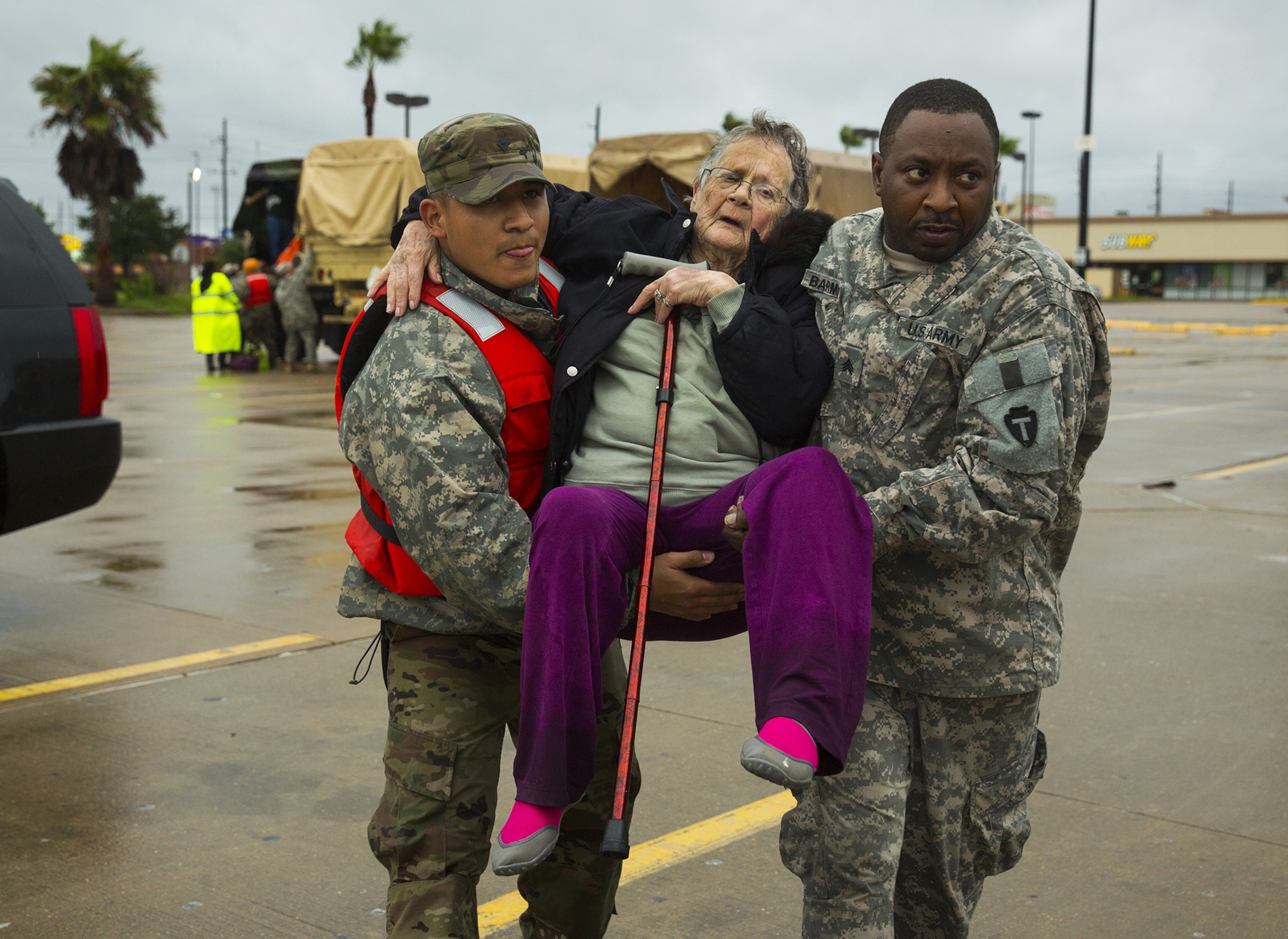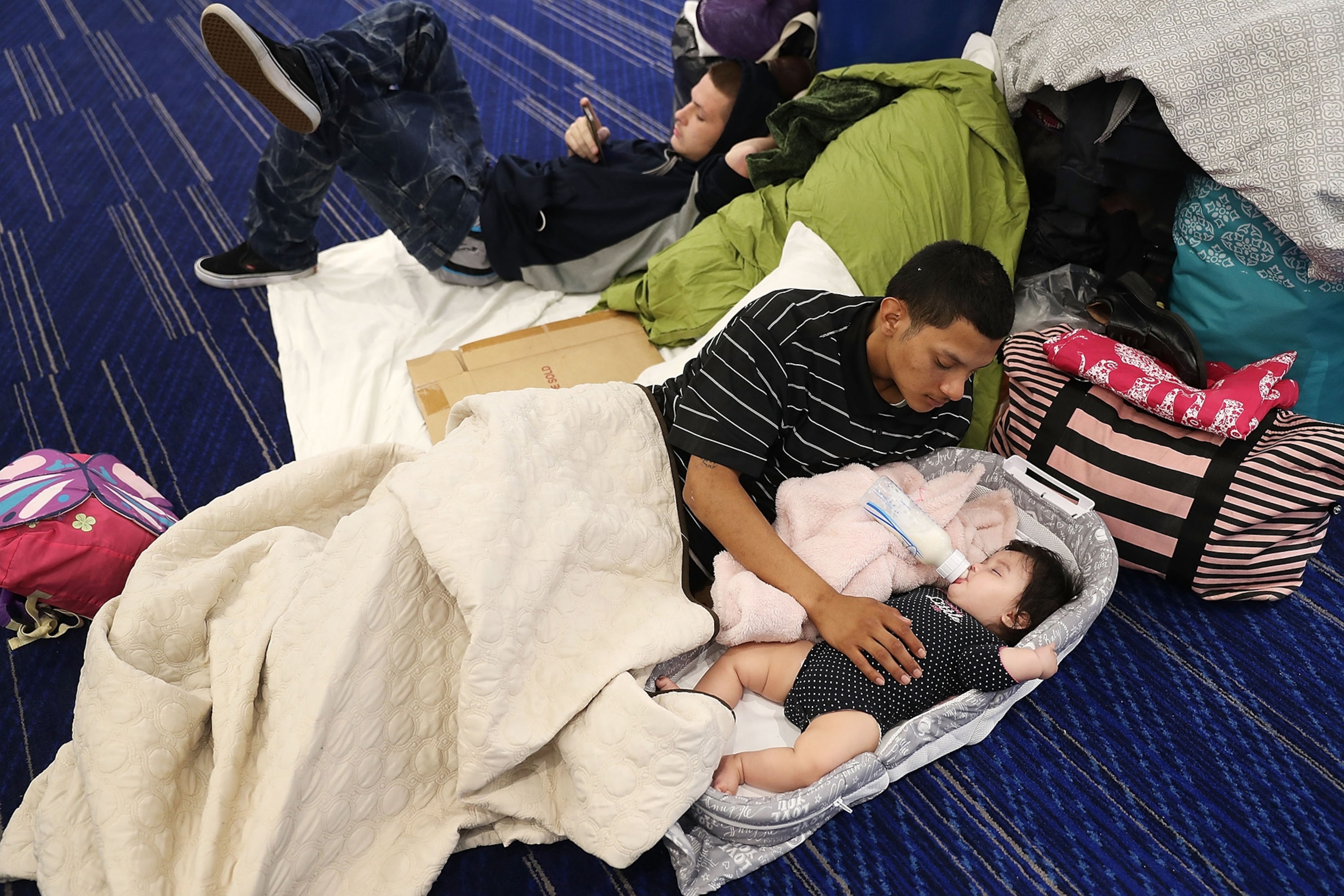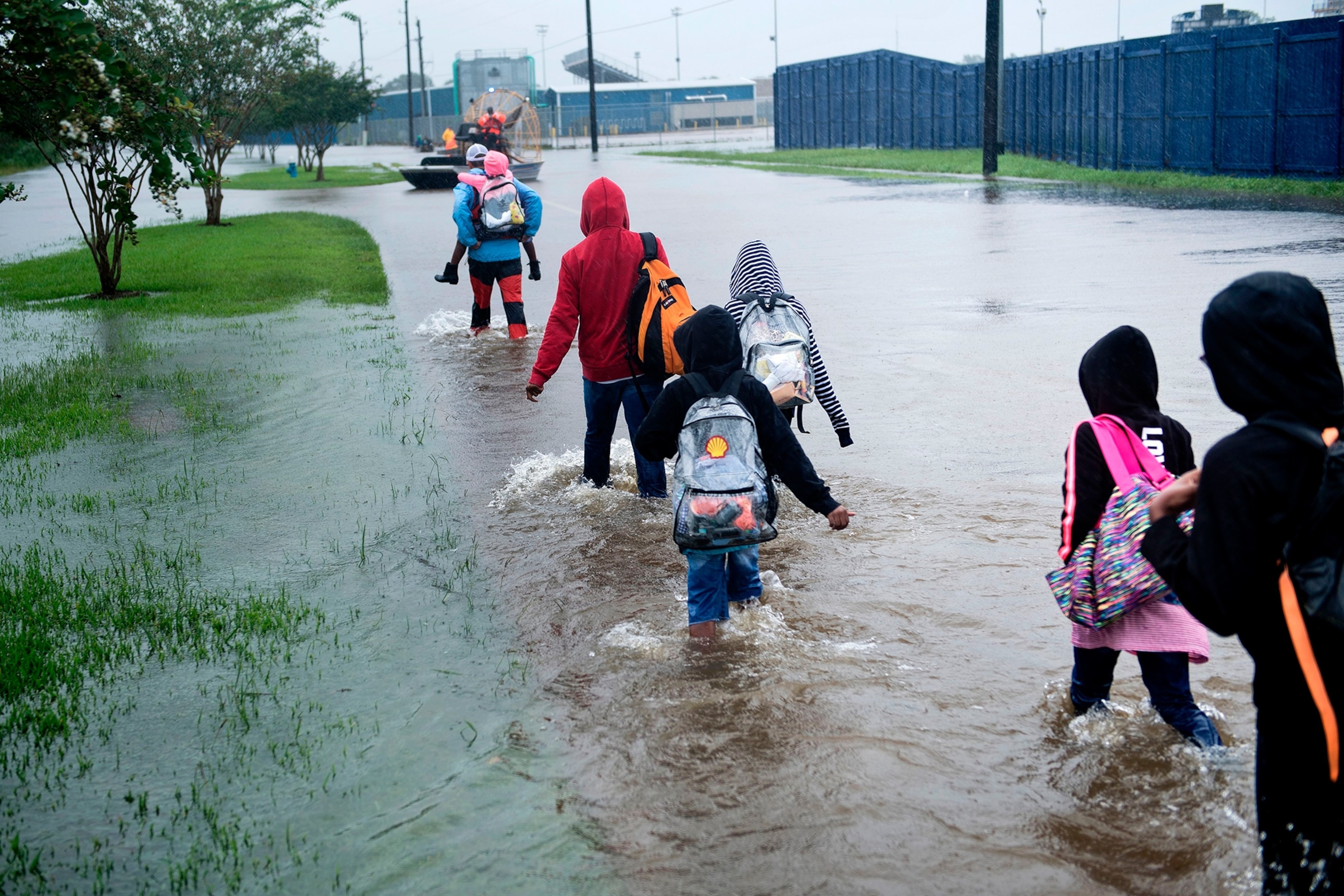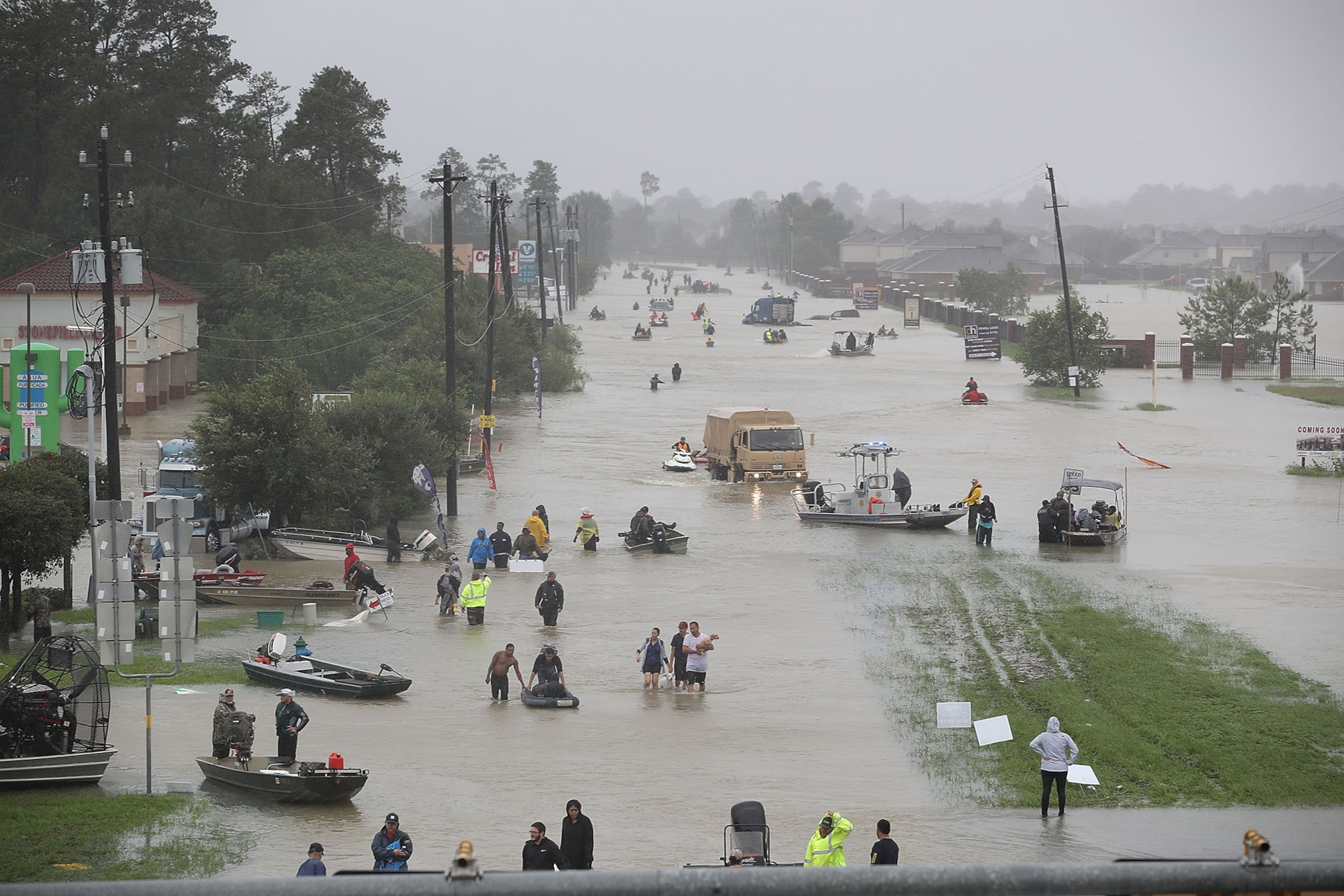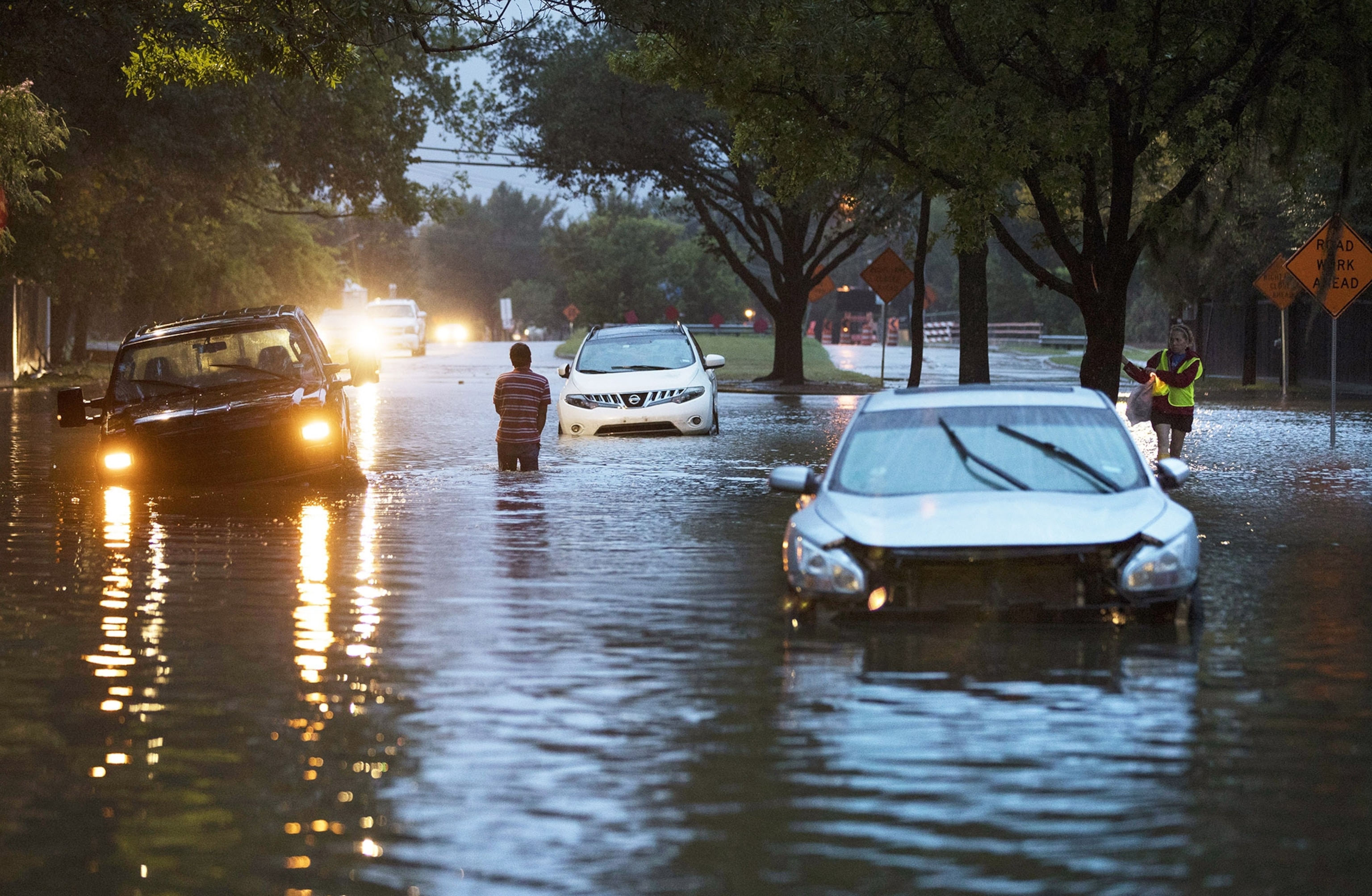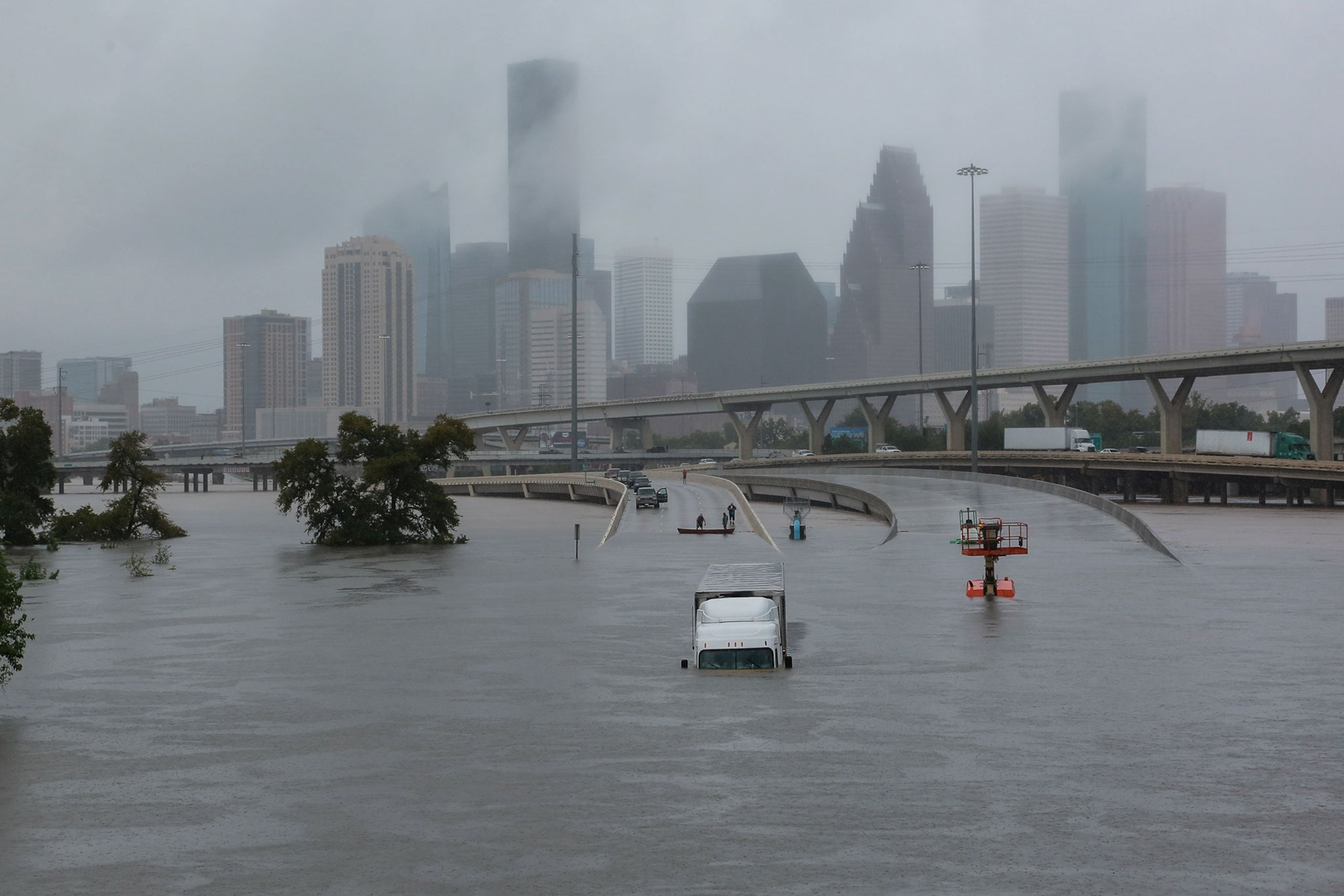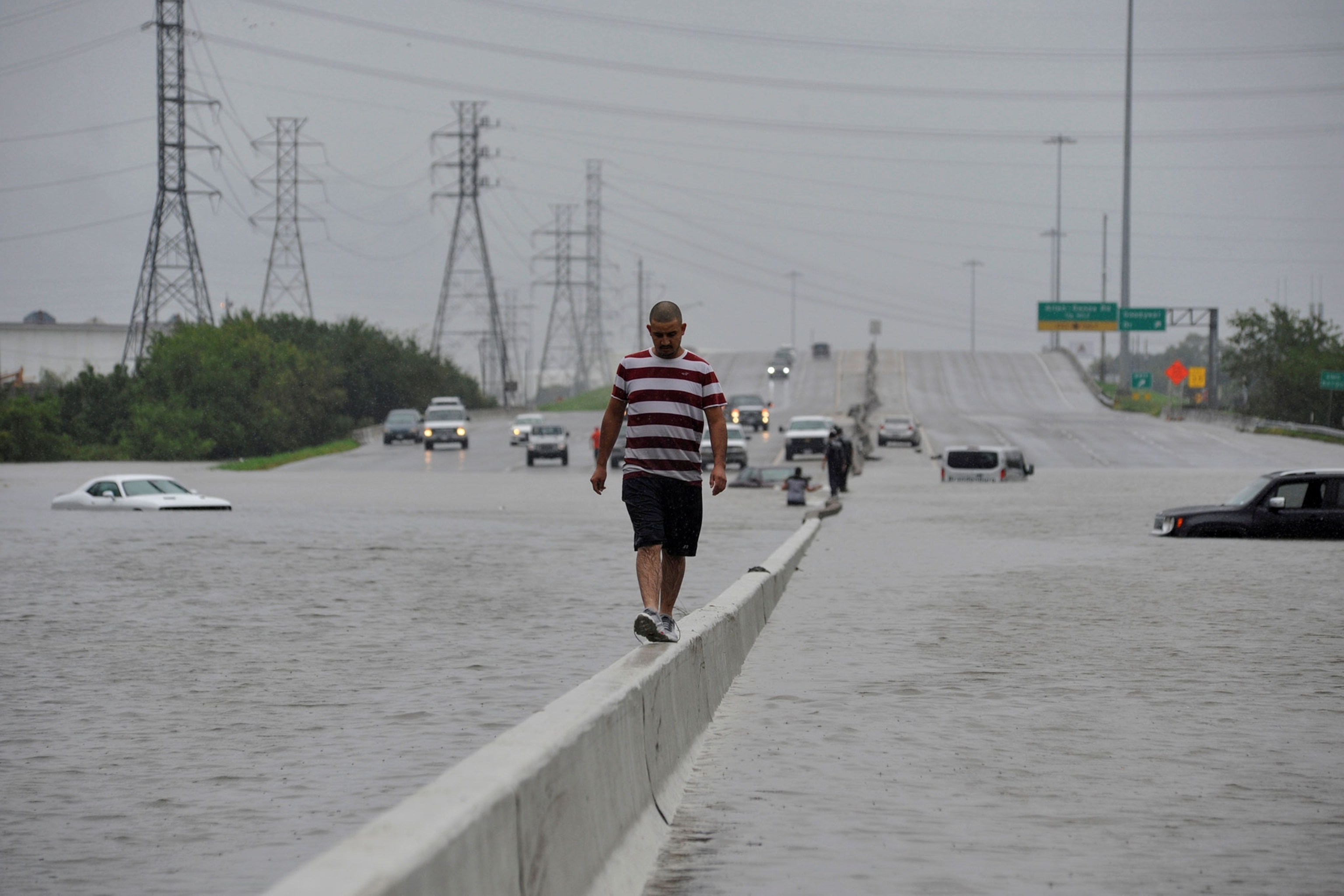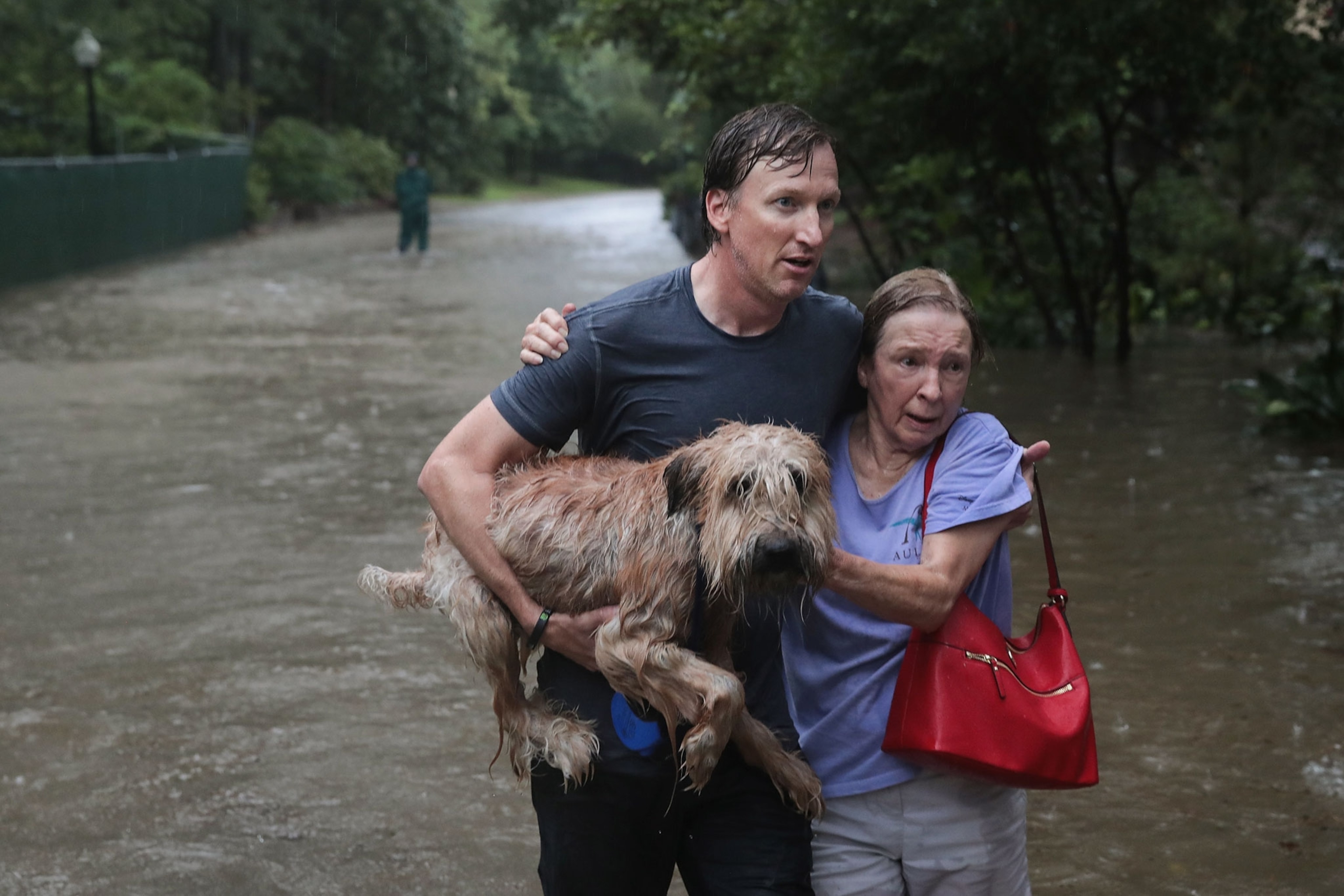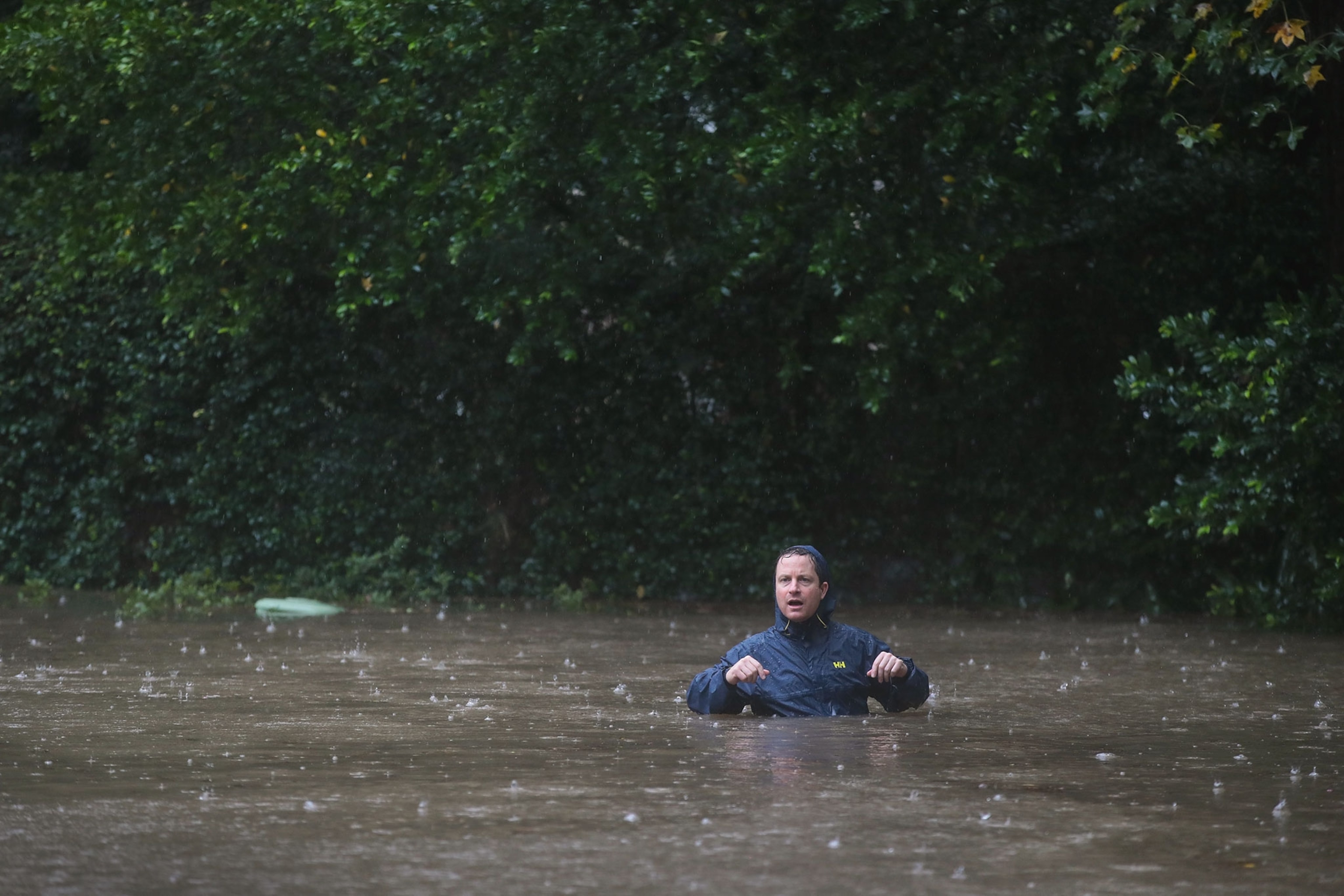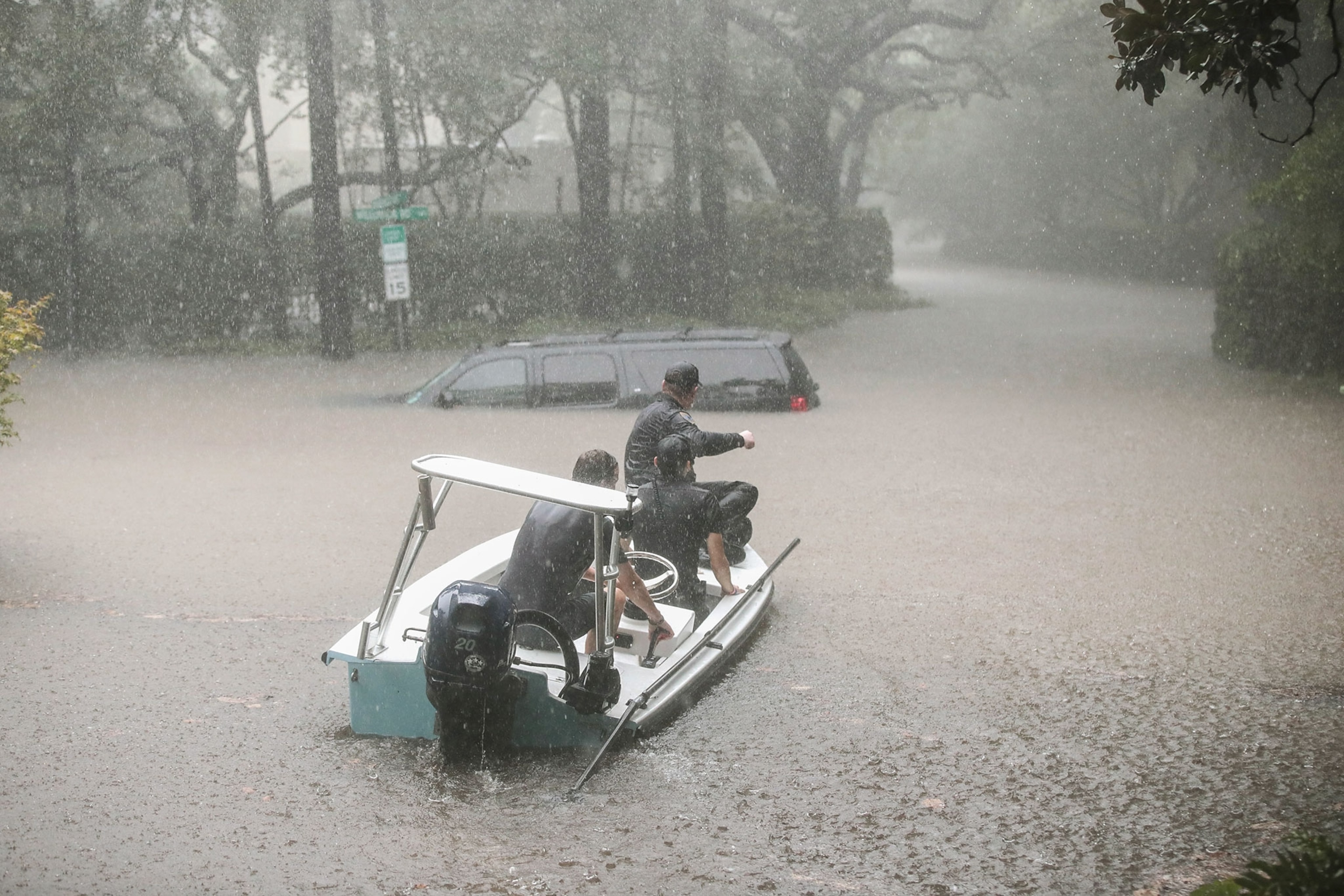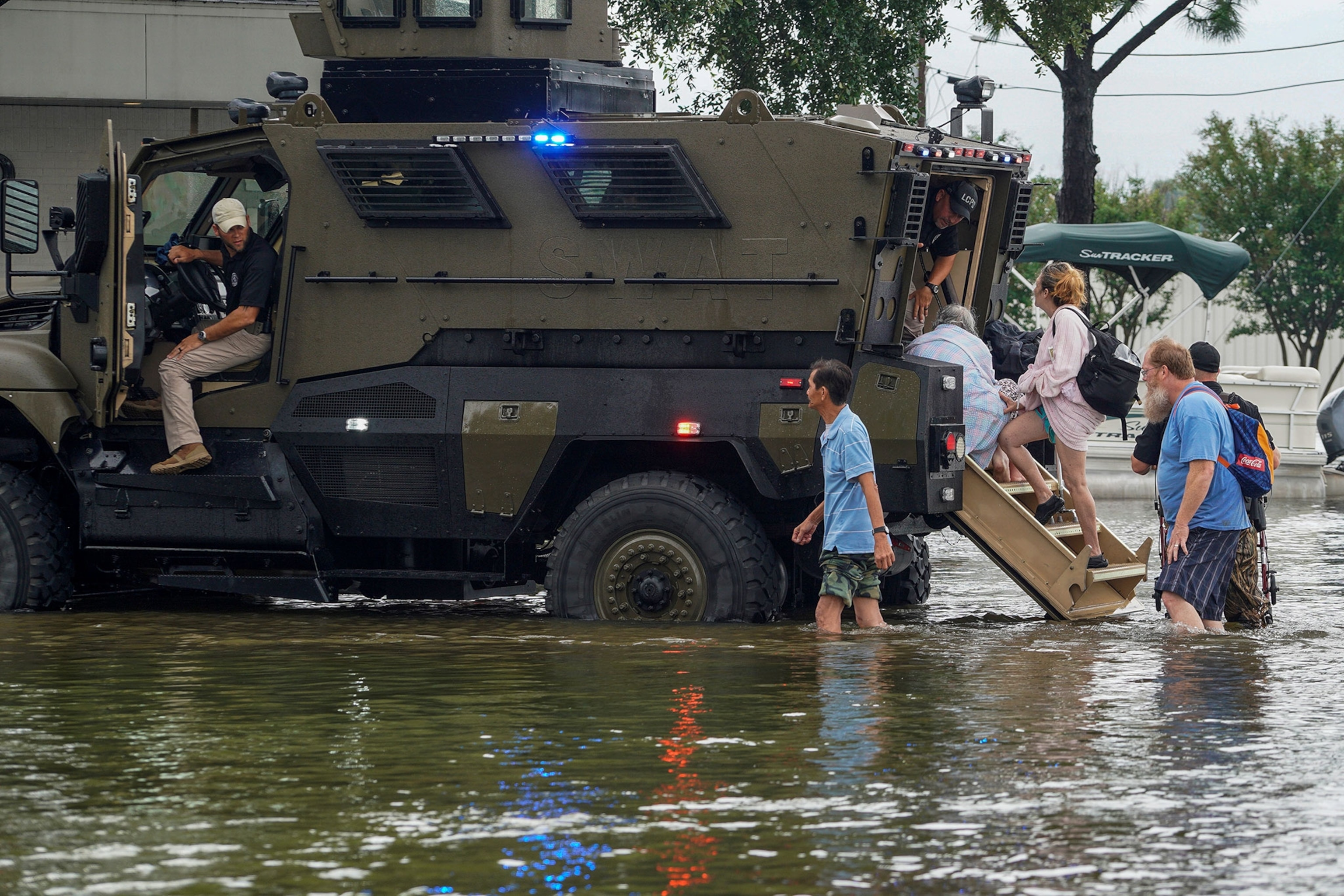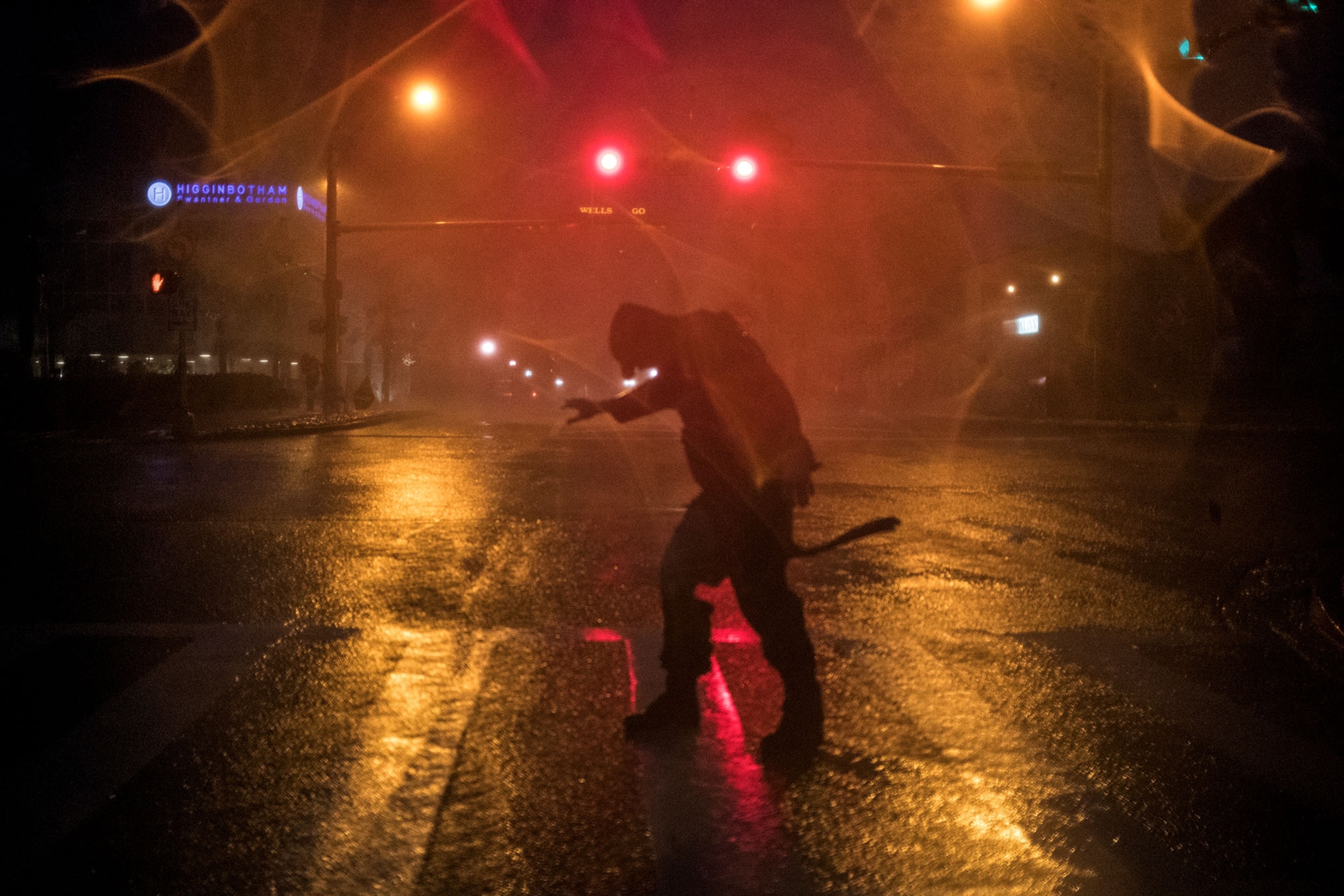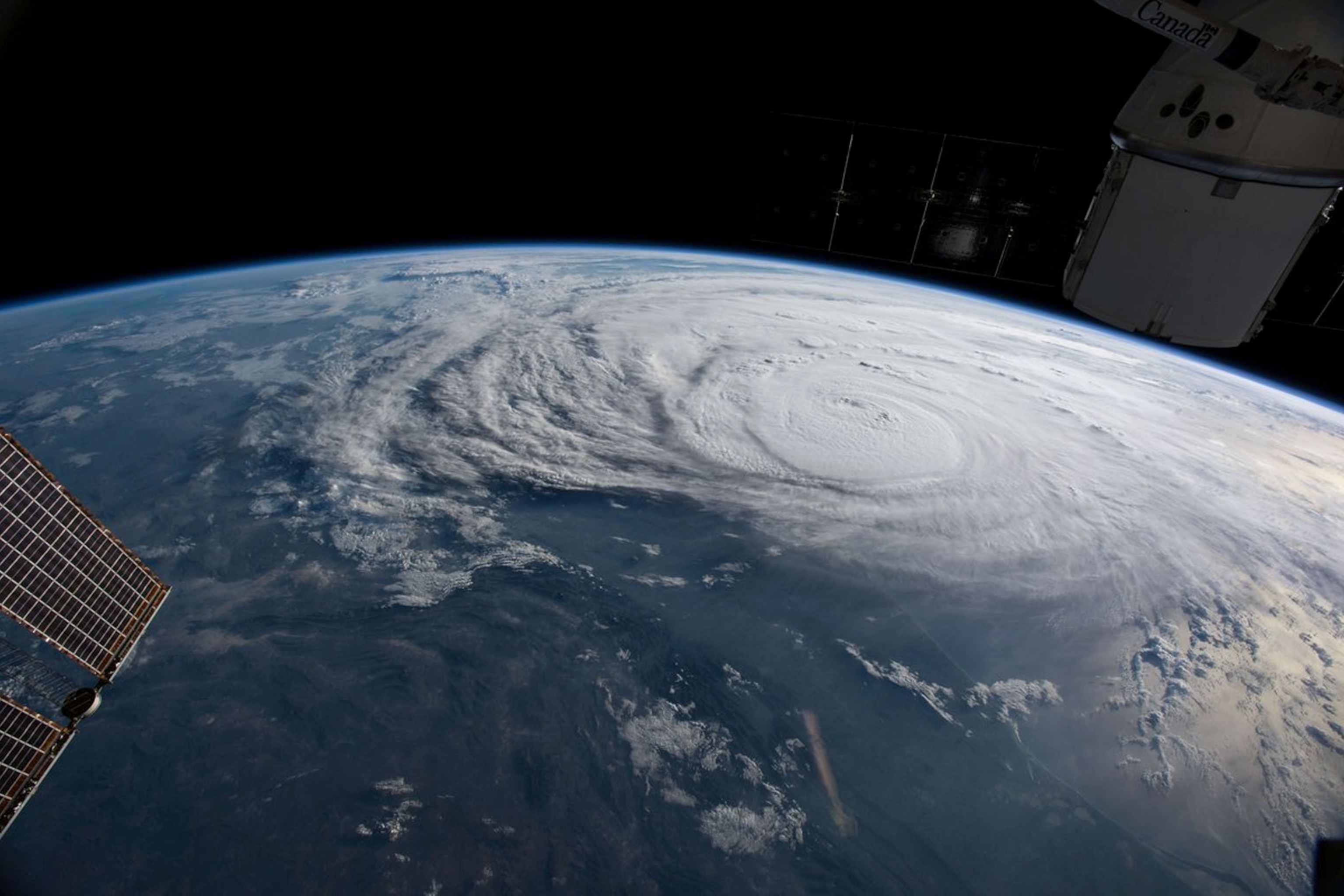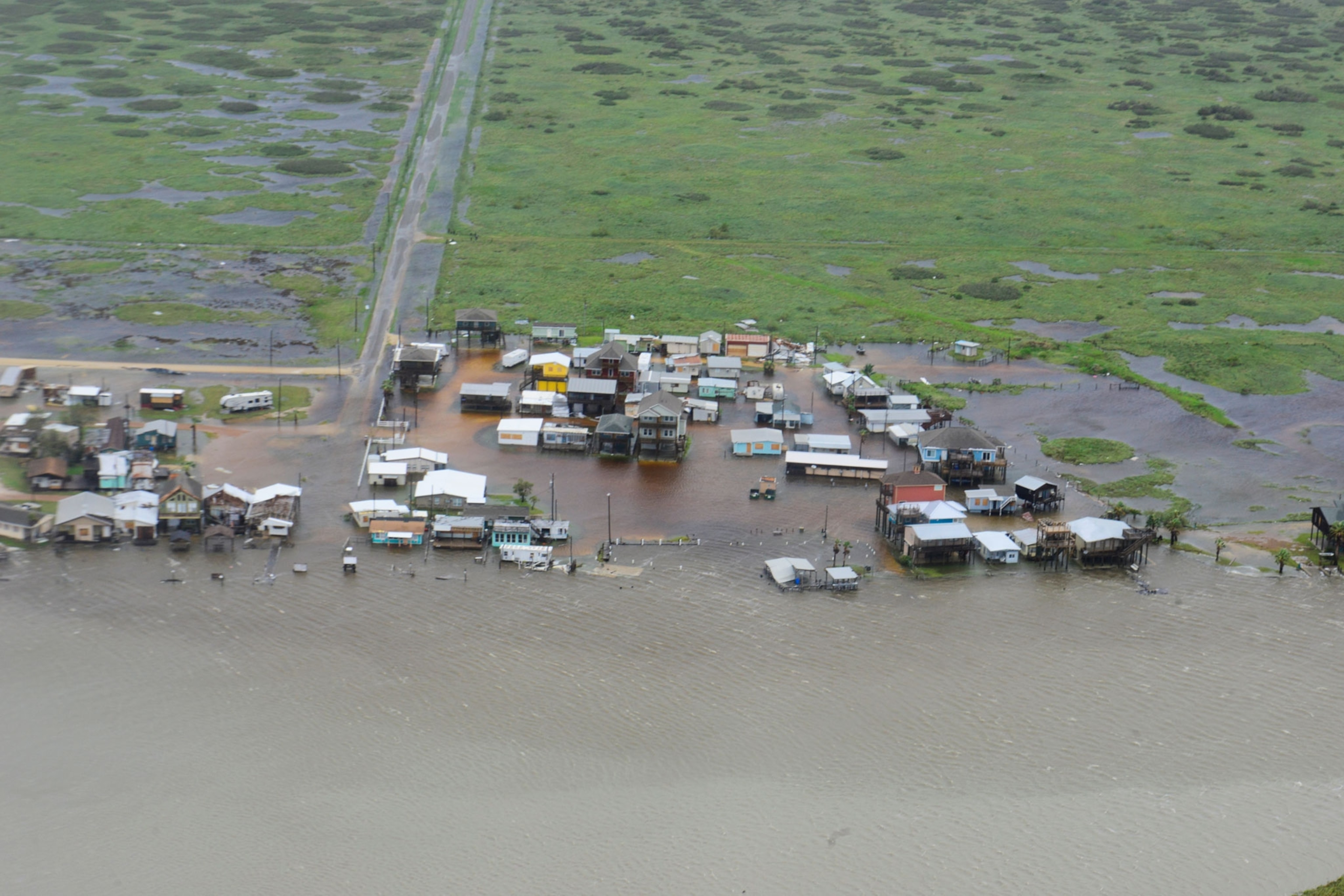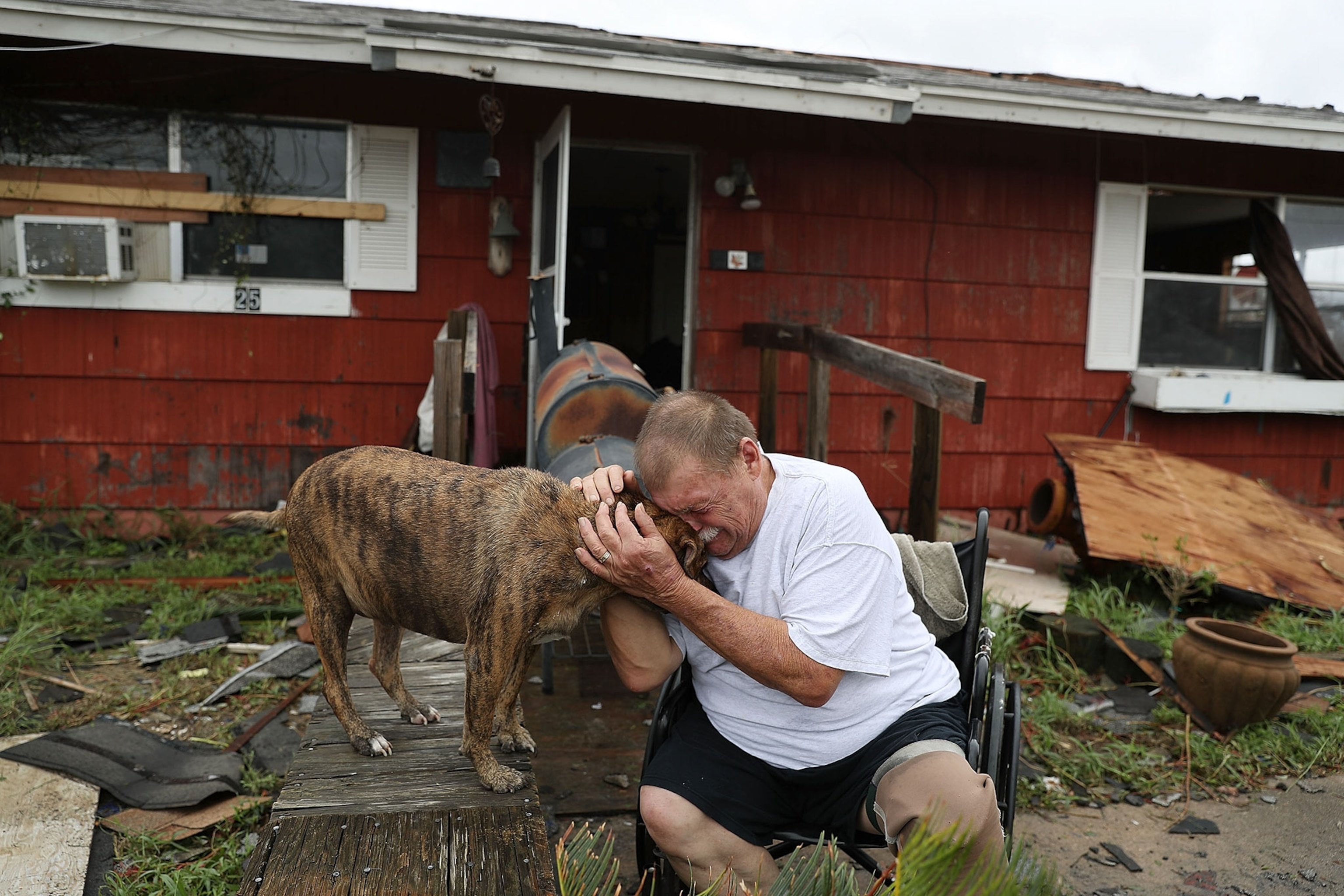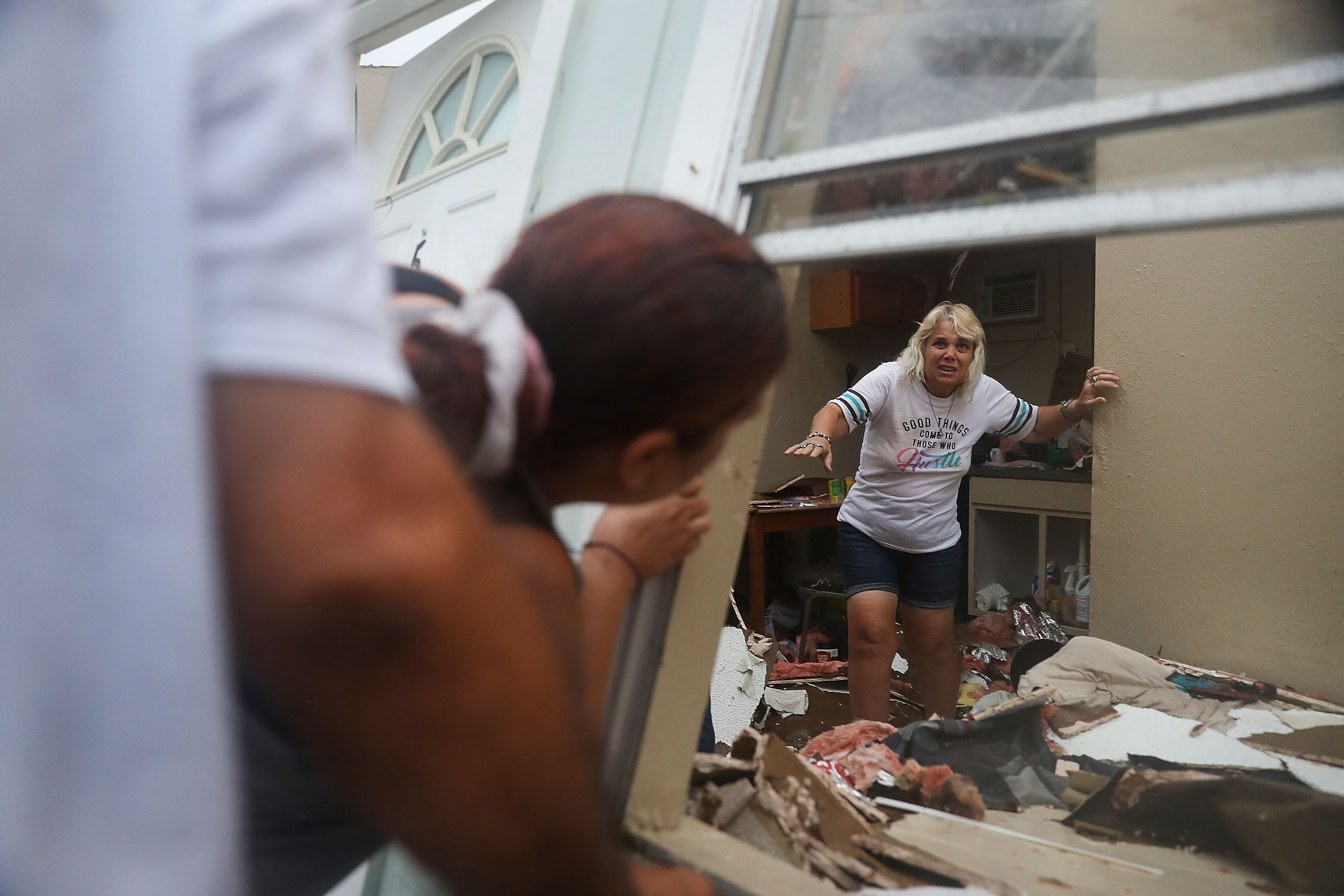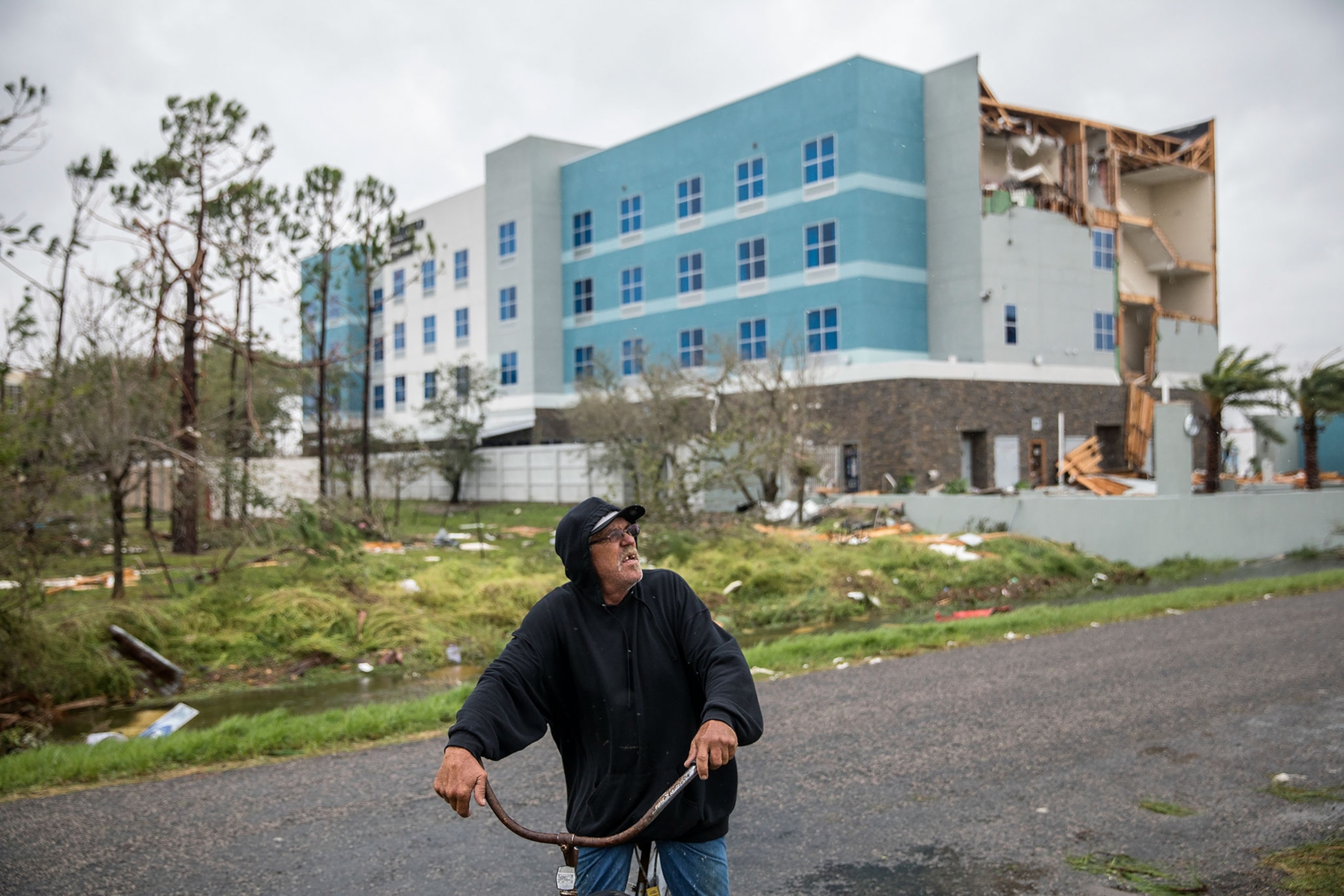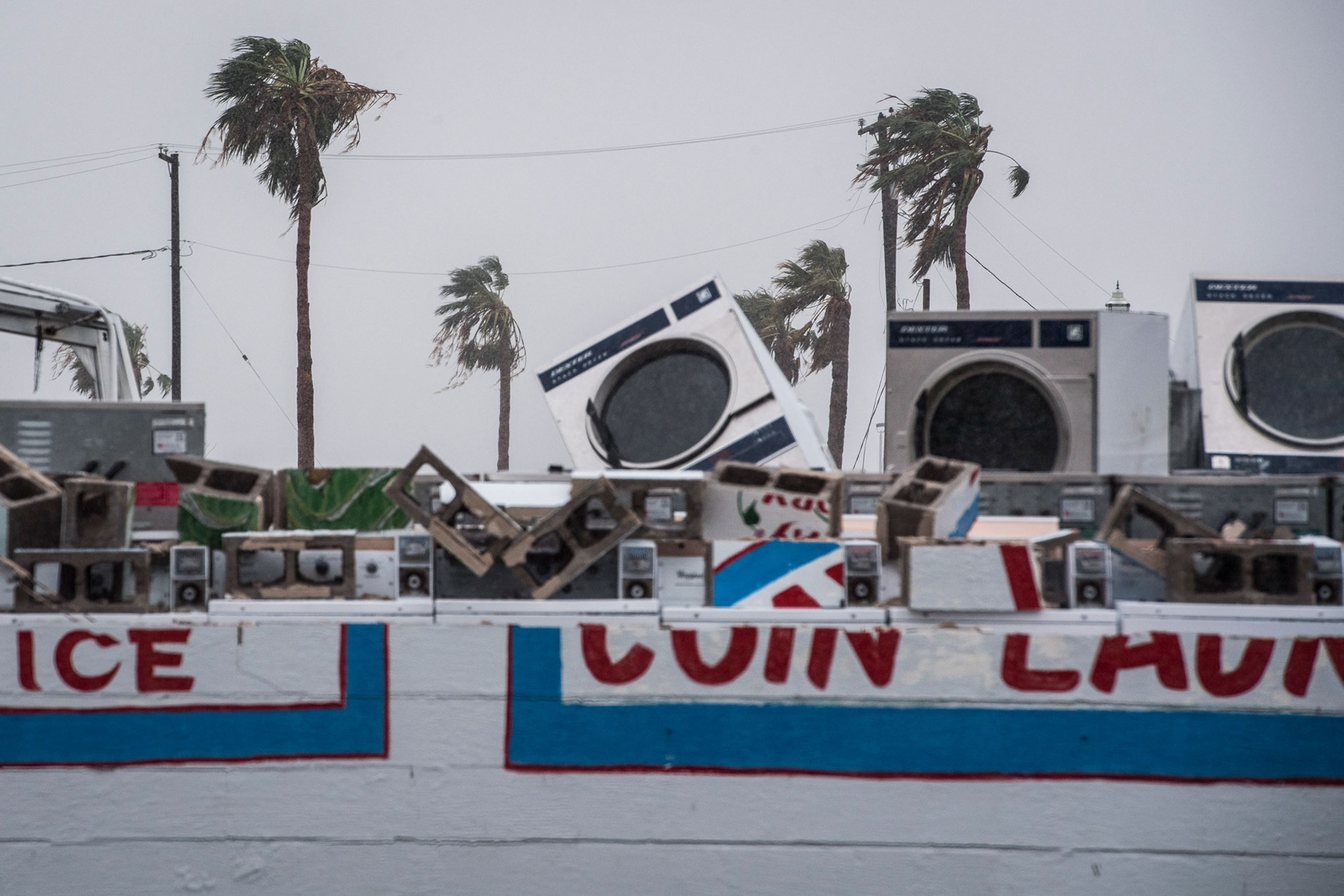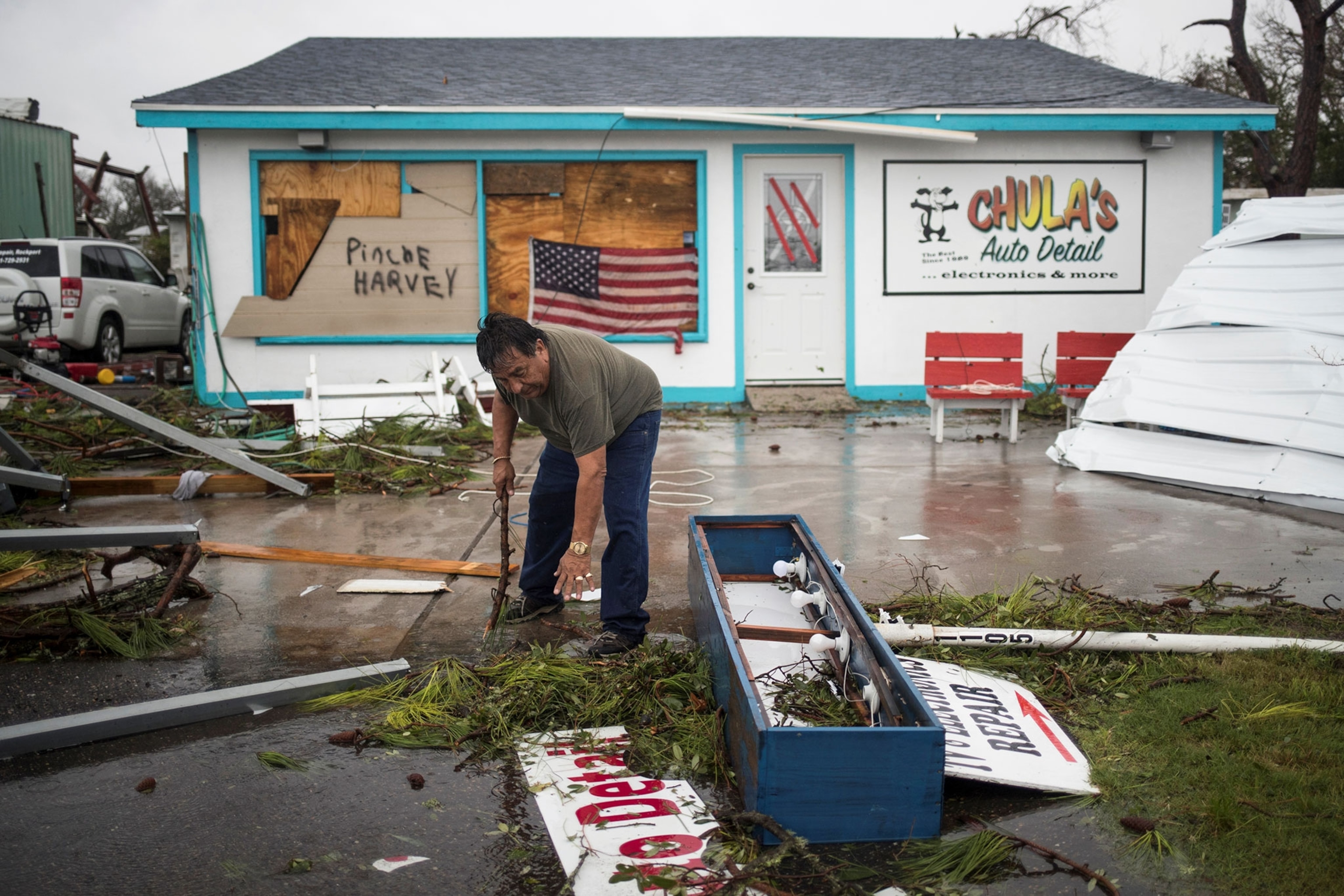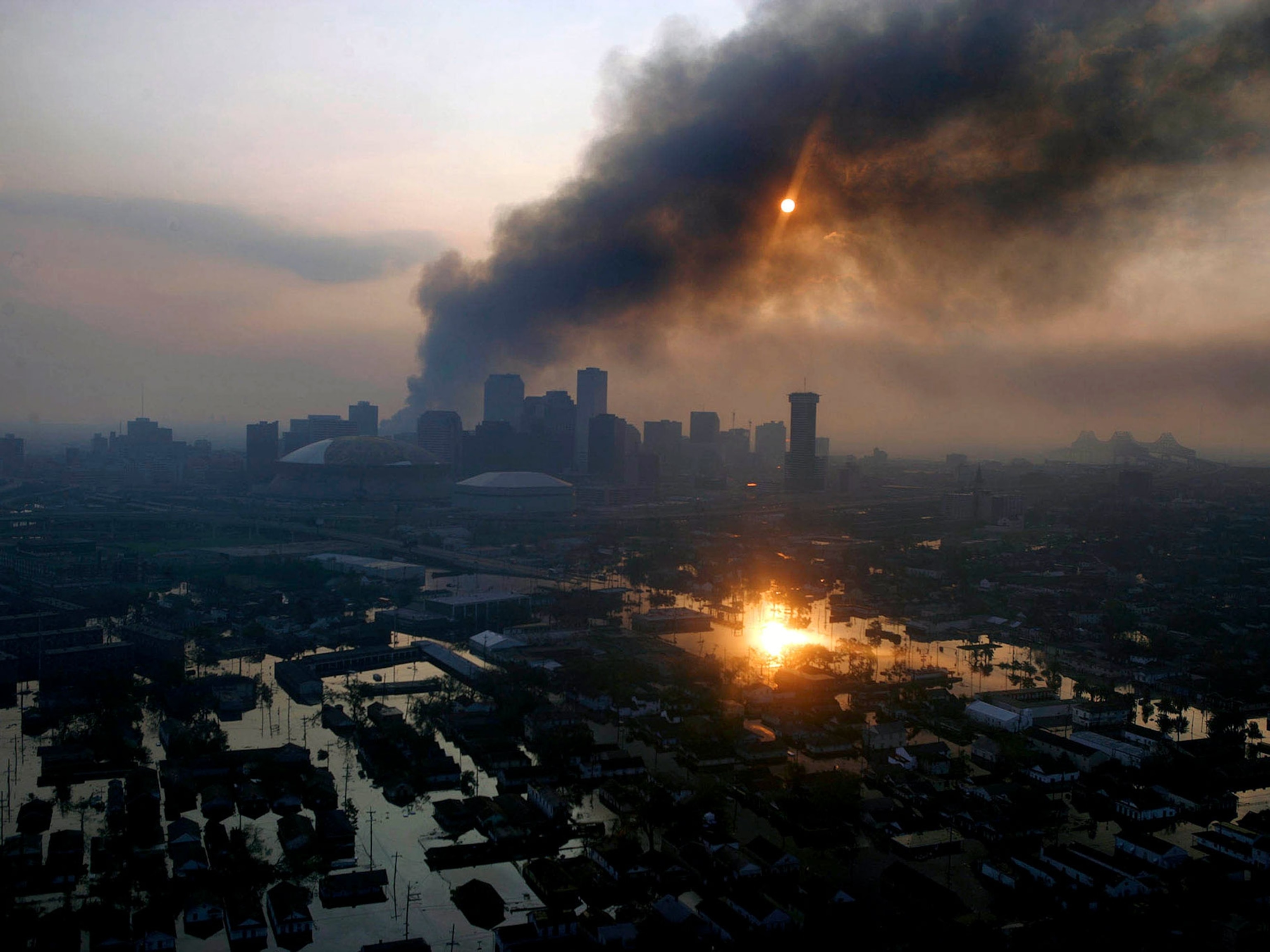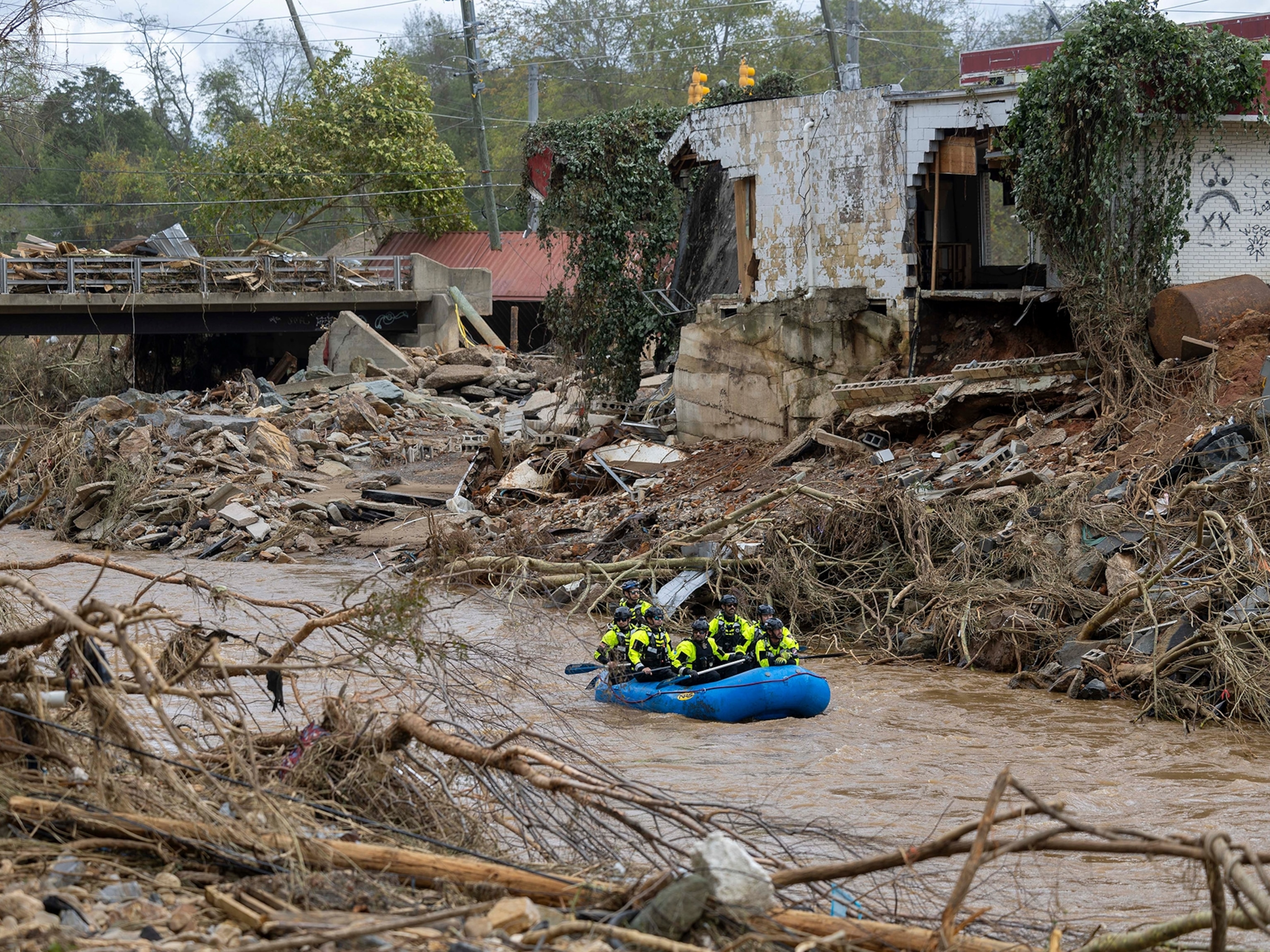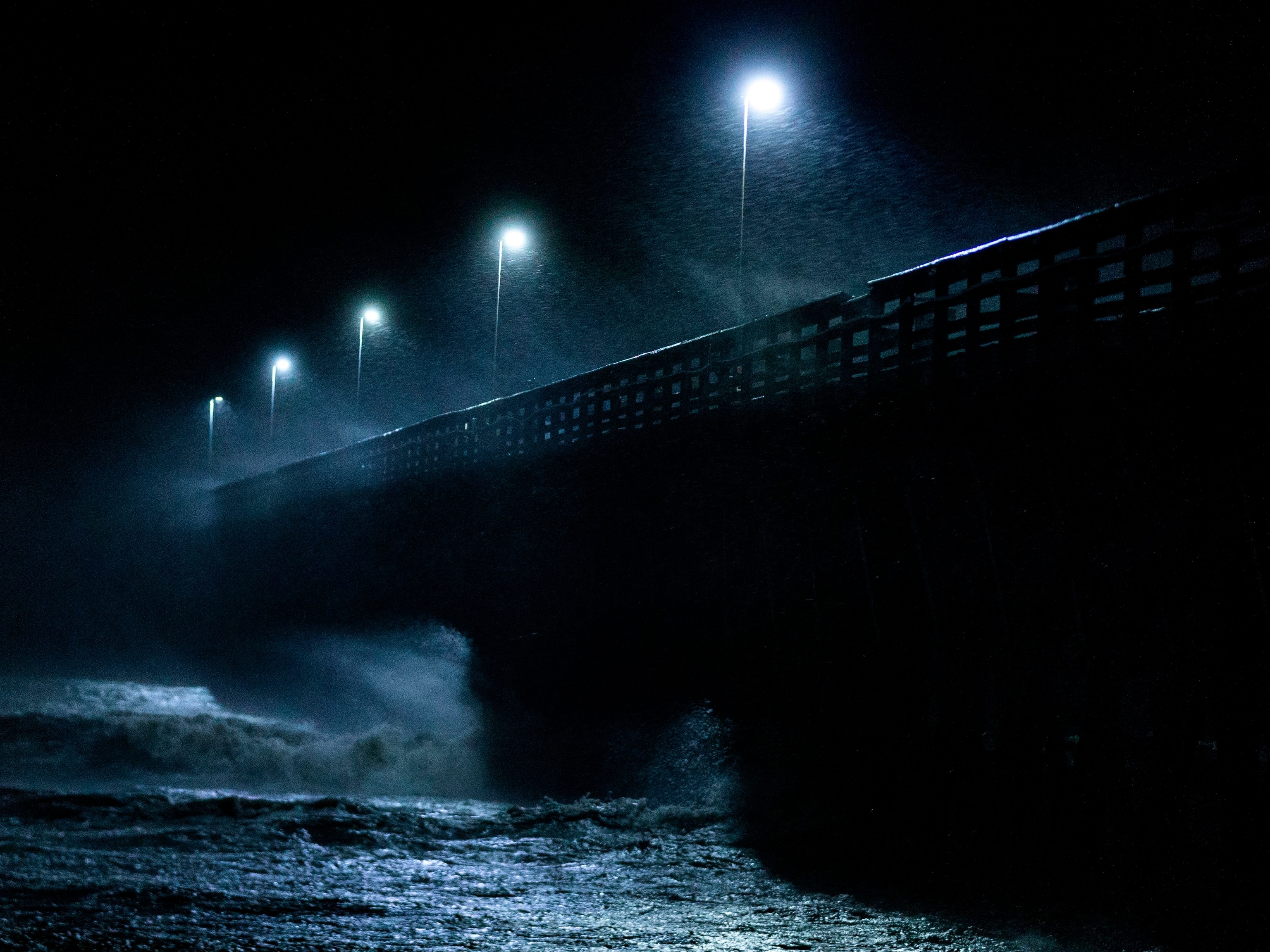
Harvey May Become the Rainiest Storm in U.S. History—Here's Why
Several factors have combined to make the storm wetter than most, with potentially deadly consequences for the Texas coast.
Hurricane Harvey’s fiercely destructive winds have greatly diminished since the storm made landfall as a Category 4 hurricane on the Texas coast Friday, but it has only begun to inflict historically catastrophic damage on the Lone Star State.
Forecasters think the storm’s nearly stationary movement and drenching rainfall could, as Colorado State University meteorologist Phil Klotzbach described it, “basically train a fire hose” on a stretch of the Texas coast.
Pictures Show Harvey's Impact
Harvey could dump as much as 50 inches of rain on parts of coastal Texas from Sunday to Thursday. That would break the record for rainfall from a tropical cyclone in the United States, which was set in 1978 by tropical storm Amelia. That storm came ashore near Brownsville, Texas, in July 1978, moved slowly inland, and dropped 48 inches of rain.
It’s unusual for a hurricane as intense as Harvey—which had peak winds of 130 miles an hour at landfall—to be such a rainmaker.
“Powerful hurricanes are less prone to stalling out, since their structure extends high into the atmosphere, and over a large area of the atmosphere, and are thus more likely to ‘feel’ the steering influence of the larger scale planetary winds,” said meteorologist Jeff Masters, founder of the website Weather Underground. “A small, shallow tropical system … is more likely to get trapped in a local area without much steering flow.”
That was the case with Amelia, which barely achieved tropical storm status when it came ashore in 1978.
The five-day forecast from the National Hurricane Center in Miami says that Hurricane Harvey will move only a few miles a day from Sunday until Wednesday, essentially parking itself on the Texas coast near Houston.
Klotzbach, who’s part of Colorado State’s Tropical Prediction Project, said that would allow the storm to ingest moisture from the humid air over the Gulf of Mexico and dump it back onto Texas as rainfall.
“A lot of what drives prolific rainmaking in tropical cyclones is their forward speed,” Klotzbach said. “Obviously, Harvey is currently virtually stationary and, unfortunately, close enough to the Gulf of Mexico that it’s able to tap all of that Gulf moisture.”
And since at least part of the storm’s circulation will remain over water, Klotzbach added, Harvey will retain some strength until it finally begins moving inland late this week. That means that in the coming four or five days, Harvey could dump as much rain on Houston as normally falls there in a year, he said.
Hurricane Harvey’s eye came ashore Friday near Rockport, Texas—about 30 miles northeast of Corpus Christi—around 9 p.m. Central time.
Listen to IPPY Award-winning author Willie Drye talk about his latest book, For Sale—American Paradise: How Our Nation Was Sold an Impossible Dream in Florida, on NPR affiliates WUNC, Chapel Hill and WLRN, Miami. Visit his blog, Drye Goods, now in its 10th year. Follow him on Facebook.
To support victims of Harvey, consider giving to United Way of Greater Houston.
